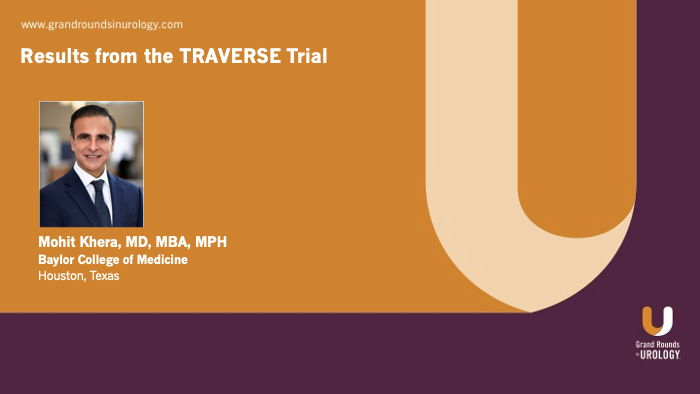Men’s Health
Around the world, men die an average of 6 years earlier than women, and the mortality rate for men is higher than for women in 12 out of 15 leading causes of death. Health outcomes among boys and men are substantially worse than among girls and women. Men engage in riskier behavior, are less likely to practice preventative health measures, and are more likely to avoid important screenings.
Grand Rounds in Urology Men’s Health Learning Center is to educate PCPs, urologists, oncologists, and APPs who work with men on the latest clinical research and practice for addressing the needs of this population. Topics covered andrology and sexual health; Peyronie’s disease; male infertility; health, exercise, and wellness; BPH and other prostate conditions; and urinary incontinence I hope you find this resource valuable for improving outcomes for your patients.
ANDROLOGY
This section will build your expertise in andrology, with a focus on testosterone replacement therapy.
AUA GUIDELINES
This section will provide you with the latest updates on AUA Guidelines for the early screening of prostate cancer.
BIOMARKERS
This section will guide your understanding of the use of biomarkers in localized prostate cancer screening, treatment, and surveillance.
INFERTILITY
This section will build your understanding of fertility testing and treatments.
INTEGRATED MEN’S HEALTH CENTER
This section will build your understanding of how to provide an integrated men’s health experience for your patients.
PEYRONIE’S DISEASE
The estimated prevalence of Peyronie’s Disease (PD) is 5%-7%. Up to 9% of all men have PD. Prevalence increases with erectile dysfunction, hypogonadism (40%) and diabetes (20.3%) Penises vary in shape and size, and having a curved erection is not necessarily a cause for concern. In PD, the bend is significant and may occur along with pain or interfere with sexual function. Erectile Dysfunction (ED) is a common presenting symptom of PD. ED can pre-date PD in up to 50% of patients. The location of penile plaque often corresponds with the direction of the curvature deformity. 80% of the time PD typically presents as a dorsal upward curvature. Risk factors associated with PD include genetic factors such as Paget’s disease, or a family history of PD, trauma from vigorous intercourse, cystoscopic procedures, urethritis, prostatectomy; injection therapy such as vasoactive drugs for ED, and vascular conditions such as diabetes, hyperlipidemia, hypertension, heart disease, smoking and low testosterone. Peyronie’s Disease carries a significant mental health burden; up to 40 % of PD patients are clinically depressed. Patients are often distressed and need clear communication and understanding. Managing patient expectations is critical; the provider must at the first visit let patients know they will likely never regain their pre-PD penis but can reasonably expect to achieve erections suitable for penetration and painless sex. AUA Guidelines: require a subjective assessment of a patient with PD; a careful history (to assess penile deformity, interference with intercourse, penile pain, and/or distress) and a physical exam of the genitalia (to assess for palpable abnormalities of the penis). They also state that clinicians should perform an in-office intracavernosal injection (ICI) test with or without duplex Doppler ultrasound prior to invasive intervention. PD has traditionally been categorized into two phases, the acute phase and the chronic phase. Acute Phase: During the acute phase, plaque forms in the penis, the bending/curving of the penis actively worsens, and patients may feel pain. The acute phase usually lasts for 5-7 months but can last up to 18 months in rare cases. Treatment during the active phase consists of nonsurgical medical therapy such as medications like sildenafil and tadalafil which can stabilize progression of plaque and rarely reverse plaque formation. Collagenase clostridium histolyticum (Xiaflex), is the only FDA approved treatment and is indicated in the acute phase with emerging data that it is at least as effective as in chronic phase and potentially more beneficial. Collagenase is an enzyme that breaks down specific types of collagen that make up the plaques. Breaking down the plaques reduces penile curving and improves erectile function. This treatment is approved for men with penises curving more than 30 degrees. Nondrug medical therapies include medical traction and vacuum devices aimed at stretching or bending the penis to reduce curving, and shockwave therapy-focused, low-intensity electroshock waves directed at the plaque may be used only to reduce pain. Chronic Phase: The chronic phase occurs after the plaque stops growing and the penis does not get worse or bend any further. Typically pain has resolved in chronic phase. Treatment includes all acute phase therapies as well assurgery. Surgical therapies will depend on the man’s erectile function and include plication, plaque incision/excision and grafting and lastly, penile prosthesis. Men must be counselled that all surgical therapies run the risk of further length loss.CLICK HERE FOR A COMPREHENSIVE NEEDS ASSESSMENT OF PEYRONIE'S DISEASE
SEXUAL HEALTH
This section will build your expertise in sexual health, with a focus on Erectile Dysfunction treatments and other areas of sexual function.
BENIGN PROSTATIC HYPERPLASIA (BPH)
This section focuses on causes and the range of available and upcoming treatments for BPH.
HEALTH, EXERCISE, AND WELLNESS
This section will expand your awareness of how conditions such as sarcopenia and obesity interact with urological diseases like prostate cancer. Presentations focus on management of patients with these increasingly common comorbidities and will also emphasize how diet and exercise can be used to help prevent and mitigate the effects of urologic disease.




















